Artist Edgar Degas had a unique style which sat somewhere between Impressionism and Realism.
His paintings remain amongst the most loved in all of art history.
This educated Frenchman was closely linked to the rise of Impressionism, but preferred to keep this group of painters at arm's length. Whilst renowned for his sketches and full scale paintings of ballerina scenes, Degas also took in other themes during his career.
You will find a selection of some of the more famous paintings in this section. Race course scenes can be found here as well as many portrait. Human and animal anatomy was clearly an interest for Degas, and he developed the skills to reproduce them accurately.
Drawing as a foundation to painting
The likes of Degas and earlier artists such as Leonardo da Vinci and Michelangelo have underlined their artistic abilities as draughtsmen with pencil or chalk sketches. These would then underpin their larger mural or fresco work. By Degas' time, the techniques of artists had moved closer towards the oils on canvas that we see today.
Life in Paris
Parisian life offered this artist a wealth of inspirations for his work, from the rich cultural experiences of cafe life to the richer past times of the Paris elite. Degas was someone who found interest in all walks of life, not just the richest.
The Degas family had a background in the banking industry but Edgar's passion was art, and art only. He was fortunate in being able to concentrate entirely on this right across his career, possibly to the detriment of his personal life. He never married.
The images of his work that you will find below provide examples of cutting edge impressionism and realism, which helped to shape the future of European art. Degas was your talented but sometimes brash and unwelcoming artist. He was someone you would always respect, but not necessarily like in a social sense.
Traditional artistic education
Degas was trained in the classical artistic styles and also appreciated such work on a personal level. Much of his early work went along a similar path as he set about learning more bout himself and understanding what style he preferred for his own work. The key influences on Degas at this stage would be Manet and Ingres.
Broad range of themes in Degas' oeuvre
This was an artist who would cover all main themes during his career, including facial portraits, landscapes and full length anatomical studies. There was an uncertainty in France during the early years of his life and this was matched by an art world which was enjoying new influences. Impressionism was to build momentum, with Degas a key figure.
His slightly different style and opinionated character meant his relationship with other impressionists was rarely comfortable. In the 1890s Degas took a new direction in his work, concentrating entirely on landscape painting for several years. This followed a fallow period where the artist had clearly been introspecting over a possible new series of work that could inspire him once more.
Inspiration from travel
Some say his inspiration for these scenes came from train journeys, from where he would view some stunning French countryside. Many will make immediate comparisons with the work of Claude Monet, both in terms of colour and composition. Degas frequently reduced detail and 'clutter' to an absolute minimum.
A desire to distance himself from the likes of Monet did not translate as a disliking for his work. On the contrary, the influence of Monet is clear to see within this period of his life. Whilst Monet would often work plein-air, memory was key to Degas' landscapes. He would retire to his studio with scenes clearly laid out in his mind from earlier trips. Ingres had indeed advised this course of action to him as a budding student.
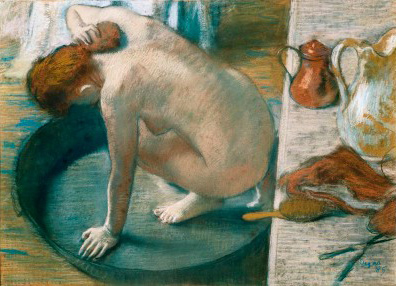
The Tub
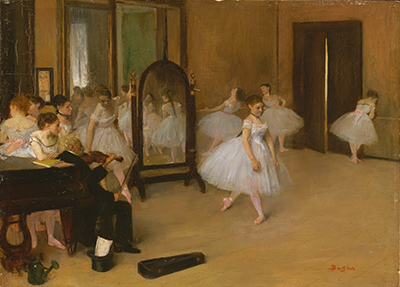
The Dancing Class
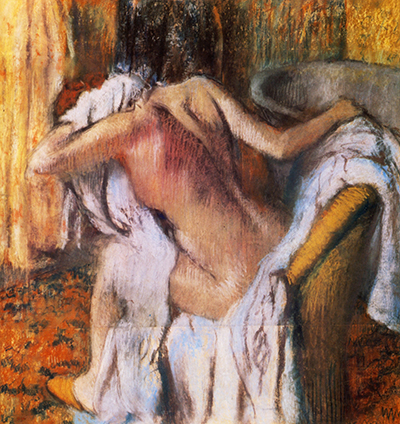
After the Bath, Woman Drying Herself
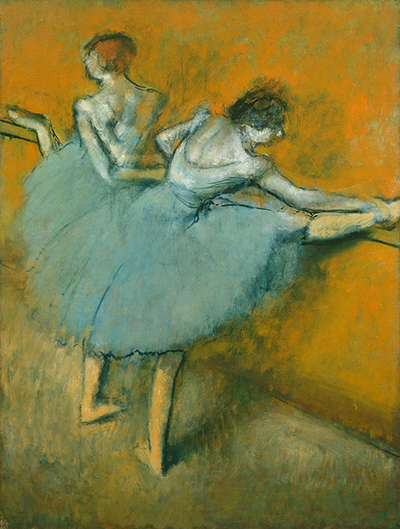
Dancers at the Barre
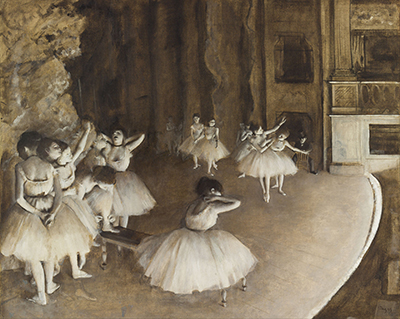
The Ballet Rehearsal on Stage
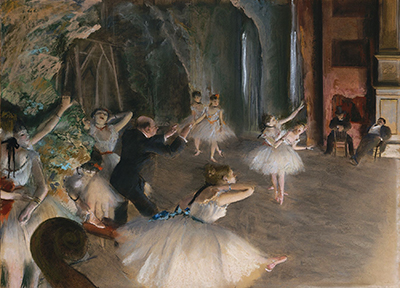
The Rehearsal of the Ballet on Stage
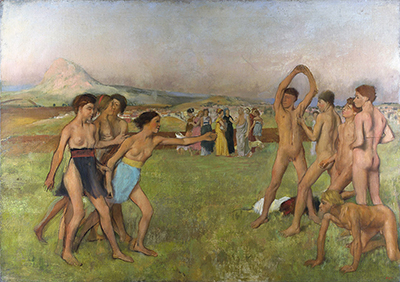
Young Spartans Exercising
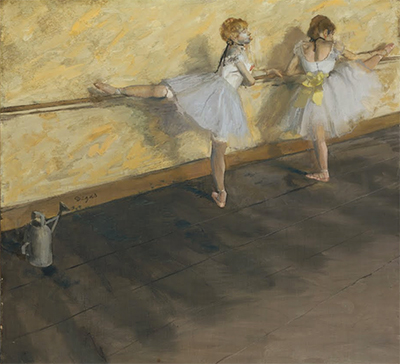
Dancers Practicing at the Barre
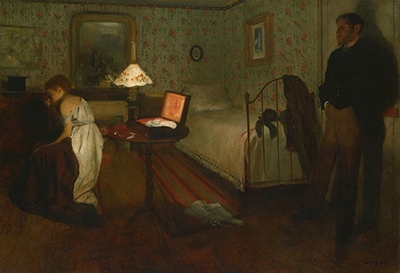
Interior
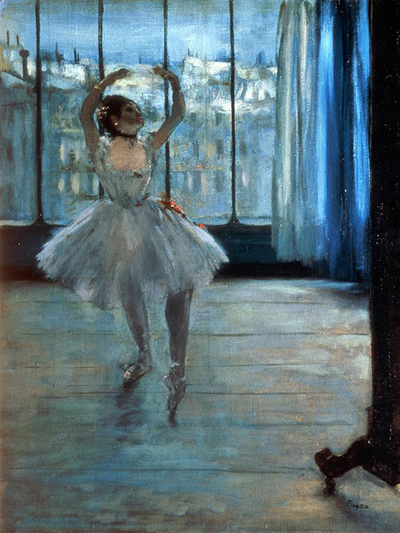
Dancer in Front of a Window
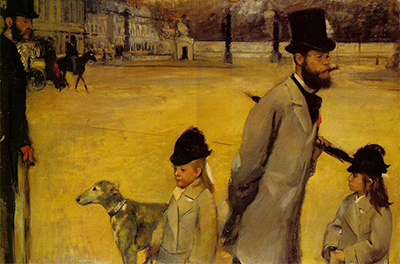
Place de la Concorde
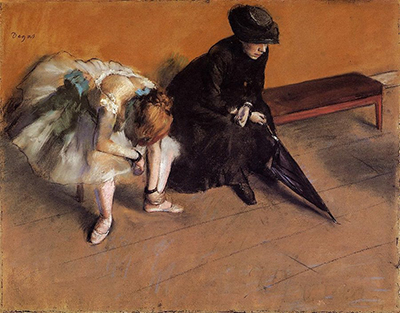
Waiting
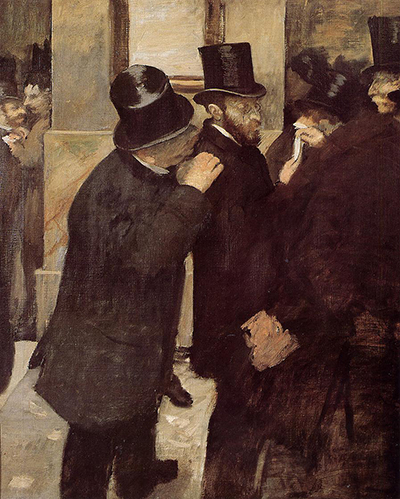
Portraits at the Stock Exchange
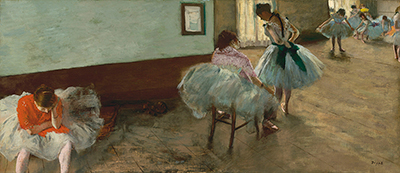
The Dance Lesson

Women Ironing
 Edgar Degas.jpg)
The Star (Dancer on Stage)
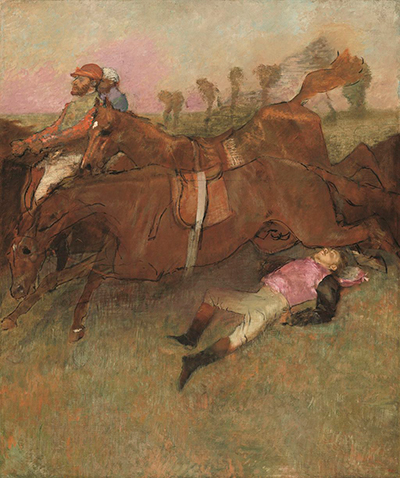
The Fallen Jockey
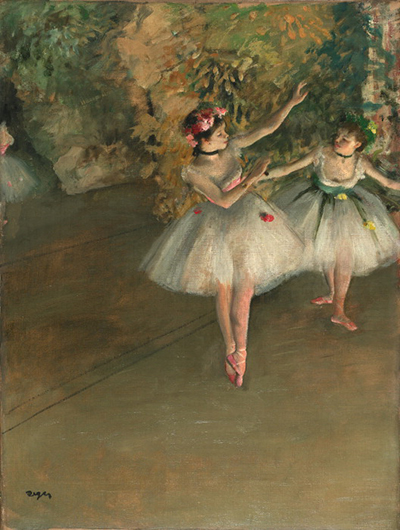
Two Dancers on Stage
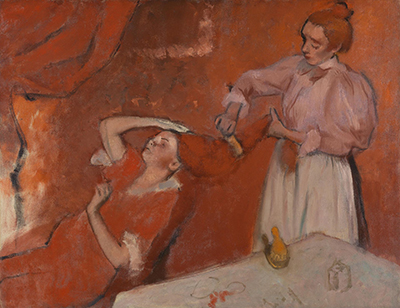










































 Edgar Degas.jpg)




 Edgar Degas.jpg)





 Edgar Degas.jpg)


















 Edgar Degas.jpg)



